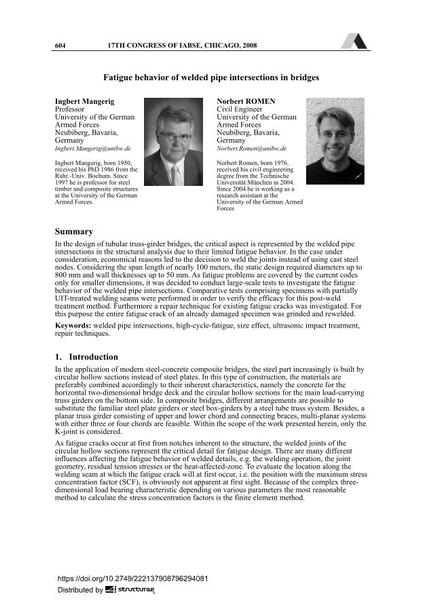Fatigue behavior of welded pipe intersections in bridges

|
|
|||||||||||
Détails bibliographiques
| Auteur(s): |
Norbert Romen
Ingbert Mangerig |
||||
|---|---|---|---|---|---|
| Médium: | papier de conférence | ||||
| Langue(s): | anglais | ||||
| Conférence: | 17th IABSE Congress: Creating and Renewing Urban Structures – Tall Buildings, Bridges and Infrastructure, Chicago, USA, 17-19 September 2008 | ||||
| Publié dans: | IABSE Congress Chicago 2008 | ||||
|
|||||
| Page(s): | 604-605 | ||||
| Nombre total de pages (du PDF): | 8 | ||||
| Année: | 2008 | ||||
| DOI: | 10.2749/222137908796294081 | ||||
| Abstrait: |
In the design of tubular truss-girder bridges, the critical aspect is represented by the welded pipe intersections in the structural analysis due to their limited fatigue behavior. In the case under consideration, economical reasons led to the decision to weld the joints instead of using cast steel nodes. Considering the span length of nearly 100 meters, the static design required diameters up to 800 mm and wall thicknesses up to 50 mm. As fatigue problems are covered by the current codes only for smaller dimensions, it was decided to conduct large-scale tests to investigate the fatigue behavior of the welded pipe intersections. Comparative tests comprising specimens with partially UIT-treated welding seams were performed in order to verify the efficacy for this post-weld treatment method. Furthermore a repair technique for existing fatigue cracks was investigated. For this purpose the entire fatigue crack of an already damaged specimen was grinded and rewelded. |
||||
